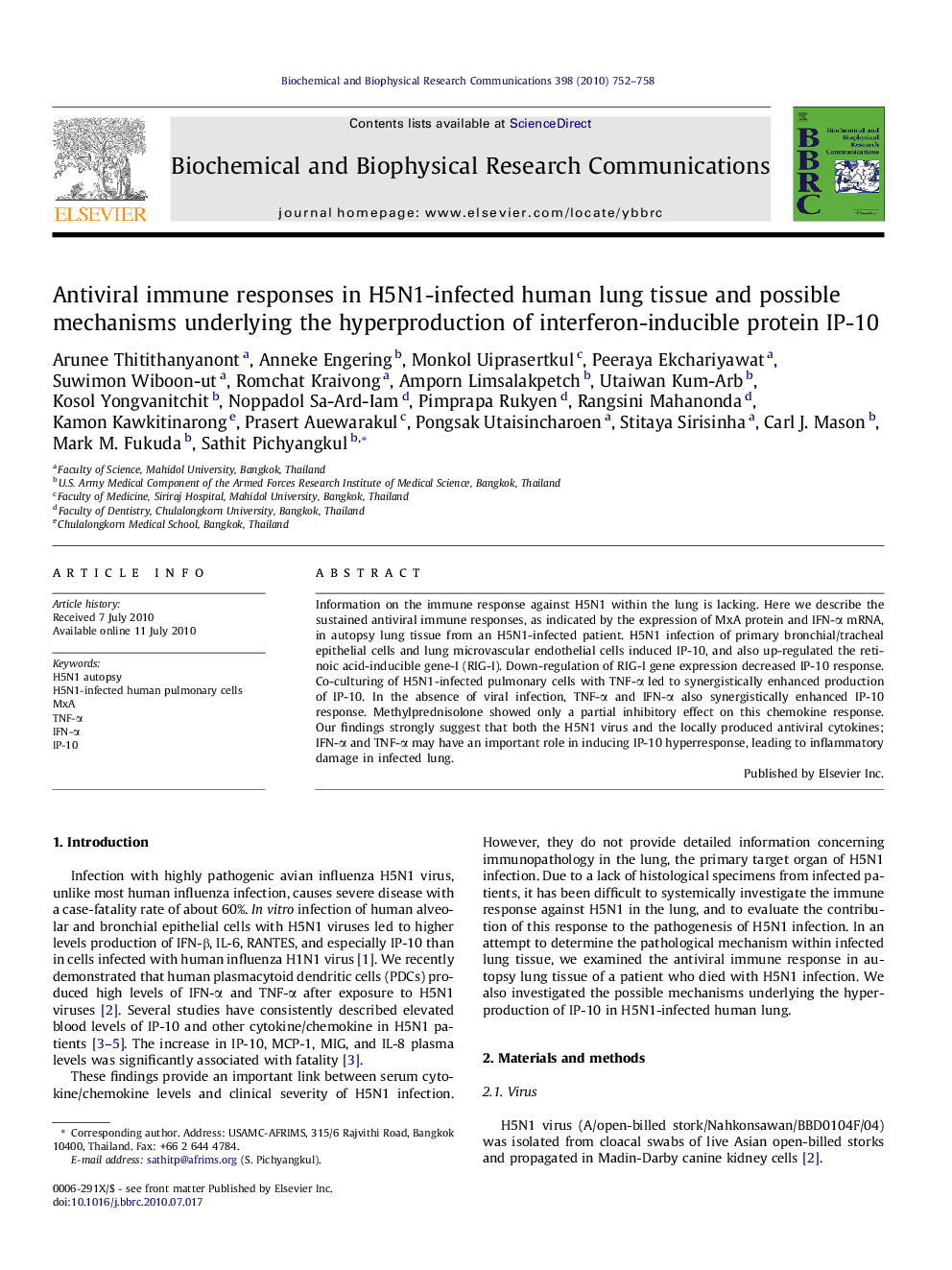| Article ID | Journal | Published Year | Pages | File Type |
|---|---|---|---|---|
| 1931530 | Biochemical and Biophysical Research Communications | 2010 | 7 Pages |
Information on the immune response against H5N1 within the lung is lacking. Here we describe the sustained antiviral immune responses, as indicated by the expression of MxA protein and IFN-α mRNA, in autopsy lung tissue from an H5N1-infected patient. H5N1 infection of primary bronchial/tracheal epithelial cells and lung microvascular endothelial cells induced IP-10, and also up-regulated the retinoic acid-inducible gene-I (RIG-I). Down-regulation of RIG-I gene expression decreased IP-10 response. Co-culturing of H5N1-infected pulmonary cells with TNF-α led to synergistically enhanced production of IP-10. In the absence of viral infection, TNF-α and IFN-α also synergistically enhanced IP-10 response. Methylprednisolone showed only a partial inhibitory effect on this chemokine response. Our findings strongly suggest that both the H5N1 virus and the locally produced antiviral cytokines; IFN-α and TNF-α may have an important role in inducing IP-10 hyperresponse, leading to inflammatory damage in infected lung.
Research highlights► Increased expression of IFN-α, MxA, and IP-10 was detected in H5N1-infected lung. ► Several evidences strongly suggest the role of IP-10 in severity of H5N1 diseases. ► A complex interplay of H5N1 infection, TNF-α and IFN-α enhanced IP-10 response. ► Methylprednisolone inefficiently blocked IP-10 production. ► This data may explain its ineffectiveness in the treatment of H5N1 infection.
